 W
WThe following table compares the nuclear accidents at the Chernobyl (1986) and Fukushima Daiichi (2011) nuclear power plants, the only INES level 7 nuclear accidents to date.
 W
WThe International Nuclear and Radiological Event Scale (INES) was introduced in 1990 by the International Atomic Energy Agency (IAEA) in order to enable prompt communication of safety significant information in case of nuclear accidents.
 W
WA nuclear meltdown is a severe nuclear reactor accident that results in core damage from overheating. The term nuclear meltdown is not officially defined by the International Atomic Energy Agency or by the United States Nuclear Regulatory Commission. It has been defined to mean the accidental melting of the core of a nuclear reactor, however, and is in common usage a reference to the core's either complete or partial collapse.
 W
WAscó Nuclear Power Plant is a nuclear power station located in Ascó, Catalonia, in Spain.
 W
WAtomics International was a division of the North American Aviation company which engaged principally in the early development of nuclear technology and nuclear reactors for both commercial and government applications. Atomics International was responsible for a number of accomplishments relating to nuclear energy: design, construction and operation of the first nuclear reactor in California (1952), the first nuclear reactor to produce power for a commercial power grid in the United States (1957) and the first nuclear reactor launched into outer space by the United States (1965).
 W
WThe Blayais Nuclear Power Plant is a nuclear plant on the banks of the Gironde estuary near Blaye, France operated by Électricité de France.
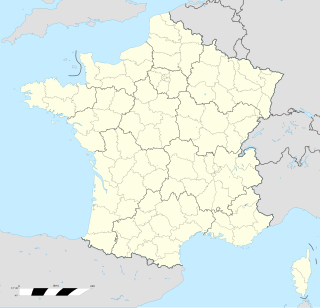 W
WThe 1999 Blayais Nuclear Power Plant flood was a flood that took place on the evening of December 27, 1999. It was caused when a combination of the tide and high winds from the extratropical storm Martin led to the seawalls of the Blayais Nuclear Power Plant in France being overwhelmed. The event resulted in the loss of the plant's off-site power supply and knocked out several safety-related systems, resulting in a Level 2 event on the International Nuclear Event Scale. The incident illustrated the potential for flooding to damage multiple items of equipment throughout a plant, weaknesses in safety measures, systems and procedures, and resulted in fundamental changes to the evaluation of flood risk at nuclear power plants and in the precautions taken.
 W
WThe Browns Ferry Nuclear Plant is located on the Tennessee River near Decatur and Athens, Alabama, on the north side of Wheeler Lake. The site has three General Electric boiling water reactor (BWR) nuclear generating units and is owned entirely by the Tennessee Valley Authority (TVA). With a generating capacity of nearly 3.8 gigawatts, it is the second most powerful nuclear plant in the United States, behind the Palo Verde Nuclear Generating Station in Arizona, and the most powerful generating station operated by TVA.
 W
WChapelcross nuclear power station is a decommissioned and partly demolished Magnox nuclear power station near Annan in Dumfries and Galloway in southwest Scotland, which was in operation from 1959 to 2004. It was the sister plant to the Calder Hall plant in Cumbria, England; both were commissioned and originally operated by the United Kingdom Atomic Energy Authority. The primary purpose of both plants was to produce weapons-grade plutonium for the UK's nuclear weapons programme, but they also generated electrical power for the National Grid.
 W
WThe Chernobyl disaster was a nuclear accident that occurred on Saturday 26 April 1986, at the No. 4 reactor in the Chernobyl Nuclear Power Plant, near the city of Pripyat in the north of the Ukrainian SSR in the Soviet Union. It is considered the worst nuclear disaster in history both in terms of cost and casualties, and is one of only two nuclear energy accidents rated at seven—the maximum severity—on the International Nuclear Event Scale, the other being the 2011 Fukushima Daiichi nuclear disaster in Japan. The initial emergency response, together with later decontamination of the environment, ultimately involved more than 500,000 personnel and cost an estimated 18 billion Soviet rubles—roughly US$68 billion in 2019, adjusted for inflation.
 W
WDavis–Besse Nuclear Power Station is a 894 megawatt (MW), nuclear power plant, located northeast of Oak Harbor, Ohio in Ottawa County, Ohio. It has a single pressurized water reactor. Davis–Besse is operated by Energy Harbor.
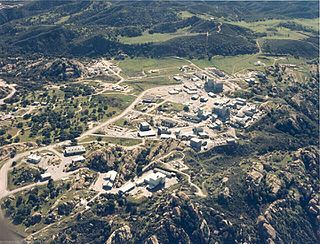 W
WThe Energy Technology Engineering Center (ETEC), was a government-owned, contractor-operated complex of industrial facilities located within the 2,850-acre (11.5 km2) Santa Susana Field Laboratory (SSFL), Ventura County, California. The ETEC specialized in non-nuclear testing of components which were designed to transfer heat from a nuclear reactor using liquid metals instead of water or gas. The center operated from 1966 to 1998. The ETEC site has been closed and is now undergoing building removal and environmental remediation by the U.S. Department of Energy.
 W
WThe Enrico Fermi Nuclear Generating Station is a nuclear power plant on the shore of Lake Erie near Monroe, in Frenchtown Charter Township, Michigan on approximately 1,000 acres (400 ha). All units of the plant are operated by the DTE Energy Electric Company and owned by parent company DTE Energy. It is approximately halfway between Detroit, Michigan, and Toledo, Ohio. It is also visible from parts of Amherstburg and Colchester, Ontario as well as on the shore of Lake Erie in Ottawa County, Ohio. Two units have been constructed on this site. The first unit's construction started on August 4, 1956 and reached initial criticality on August 23, 1963, and the second unit received its construction permit on September 26, 1972. It reached criticality on June 21, 1985 and was declared commercial on November 18, 1988. The plant is connected to two single-circuit 345 kV Transmission Lines and three 120 kV lines. They are operated and maintained by ITC Transmission.
 W
WThe Fessenheim Nuclear Power Plant is located in the Fessenheim commune in the Haut-Rhin department in Grand Est in north-eastern France, 15 km (9.3 mi) north east of the Mulhouse urban area, within 1.5 km (0.93 mi) of the border with Germany, and approximately 40 km (25 mi) from Switzerland. Unit 1 was closed in February 2020 and unit 2 on 29 June 2020.
 W
WForsmark Nuclear Power Plant is a nuclear power plant in Forsmark, Sweden, and also the site of the Swedish Final repository for radioactive operational waste. It is operated by a company mainly owned by Vattenfall.
 W
WThe Fukushima Daiichi nuclear disaster was a 2011 nuclear accident at the Fukushima Daiichi Nuclear Power Plant in Ōkuma, Fukushima Prefecture, Japan. The event was primarily caused by the 2011 Tōhoku earthquake and tsunami.
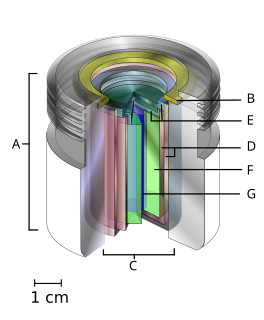 W
WThe Goiânia accident [ɡojˈjɐniɐ] was a radioactive contamination accident that occurred on September 13, 1987, in Goiânia, in the Brazilian state of Goiás, after a forgotten radiotherapy source was found in an abandoned hospital site in the city. It was subsequently handled by many people, resulting in four deaths. About 112,000 people were examined for radioactive contamination and 249 of them were found to have been contaminated.
 W
WA loss-of-coolant accident (LOCA) is a mode of failure for a nuclear reactor; if not managed effectively, the results of a LOCA could result in reactor core damage. Each nuclear plant's emergency core cooling system (ECCS) exists specifically to deal with a LOCA.
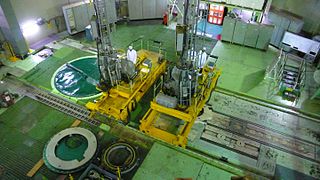 W
WMadras Atomic Power Station (MAPS) located at Kalpakkam about 80 kilometres (50 mi) south of Chennai, India, is a comprehensive nuclear power production, fuel reprocessing, and waste treatment facility that includes plutonium fuel fabrication for fast breeder reactors (FBRs). It is also India's first fully indigenously constructed nuclear power station, with two units each generating 220 MW of electricity. The first and second units of the station went critical in 1983 and 1985, respectively. The station has reactors housed in a reactor building with double shell containment improving protection also in the case of a loss-of-coolant accident. An Interim Storage Facility (ISF) is also located in Kalpakkam.
 W
WThe Mihama Nuclear Power Plant is operated by The Kansai Electric Power Company, Inc. and is in the town of Mihama, Fukui Prefecture, about 320 km west of Tokyo. It is on a site that is 520,000 m2 of which 60% is green space. Mihama - 1 was commissioned in 1970.
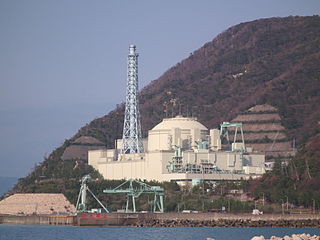 W
WMonju (もんじゅ) was a Japanese sodium-cooled fast reactor, located near the Tsuruga Nuclear Power Plant, Fukui Prefecture. Its name is a reference to Manjusri.
 W
WThe Santa Susana Field Laboratory (SSFL), formerly known as Rocketdyne, is a complex of industrial research and development facilities located on a 2,668-acre (1,080 ha) portion of the Southern California in the hills between Simi Valley and Los Angeles.
 W
WThe Sodium Reactor Experiment was a pioneering nuclear power plant built by Atomics International at the Santa Susana Field Laboratory near Simi Valley, California. The reactor operated from 1957 to 1964. On July 12, 1957 the Sodium Reactor Experiment became the first nuclear reactor in the United States to produce electrical power for a commercial power grid by powering the nearby city of Moorpark. In July 1959, the reactor experienced a partial meltdown where 13 of the reactor's 43 fuel elements partially melted, and a controlled release of radioactive gas into the atmosphere occurred. The reactor was repaired and restarted in September 1960. In February 1964, the Sodium Reactor Experiment was in operation for the last time. Removal of the deactivated reactor was completed in 1981. Technical analyses of the 1959 incident have produced contrasting conclusions regarding the types and quantities of radioactive materials released. Members of the neighboring communities have expressed concerns about the possible impacts on their health and environment from the incident. In August 2009, 50 years after the occurrence, the Department of Energy hosted a community workshop to discuss the 1959 incident.
 W
WThe Three Mile Island accident was a partial meltdown of reactor number 2 of Three Mile Island Nuclear Generating Station (TMI-2) in Dauphin County, Pennsylvania, near Harrisburg, and subsequent radiation leak that occurred on March 28, 1979. It is the most significant accident in U.S. commercial nuclear power plant history. On the seven-point International Nuclear Event Scale, the incident was rated a five as an "accident with wider consequences."
 W
WThe 2011 Tōhoku earthquake and tsunami occurred at 14:46 JST on 11 March. The magnitude 9.0–9.1 (Mw) undersea megathrust earthquake had an epicenter in the Pacific Ocean, 72 km (45 mi) east of the Oshika Peninsula of the Tōhoku region, and lasted approximately six minutes, causing a tsunami. It is sometimes known in Japan as the "Great earthquake disaster of East Japan" , among other names. The disaster is often referred to in both Japanese and English as simply 3.11.
 W
WThe Tricastin Nuclear Power Plant is a nuclear power plant consisting of 4 pressurized water reactors (PWRs) of CP1 type with 915 MW electrical power output each. The power plant is located in the south of France at the Canal de Donzère-Mondragon near the Donzère-Mondragon Dam and the commune Pierrelatte.
 W
WVandellòs I Nuclear Accident was a fire that caused an interruption of the cooling system in the Vandellòs Nuclear Power Plant, Catalonia (Spain) on 19 October 1989.
 W
WThe Vandellòs Nuclear Power Plant is a nuclear power plant in Vandellòs located close to the Coll de Balaguer pass in Catalonia, Spain.
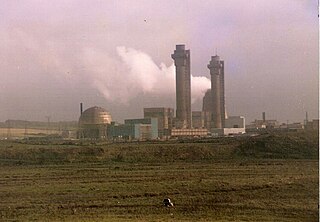 W
WThe Windscale fire of 10 October 1957 was the worst nuclear accident in the United Kingdom's history, and one of the worst in the world, ranked in severity at level 5 out of a possible 7 on the International Nuclear Event Scale. The fire took place in Unit 1 of the two-pile Windscale facility on the northwest coast of England in Cumberland. The two graphite-moderated reactors, referred to at the time as "piles", had been built as part of the British post-war atomic bomb project. Windscale Pile No. 1 was operational in October 1950 followed by Pile No. 2 in June 1951.